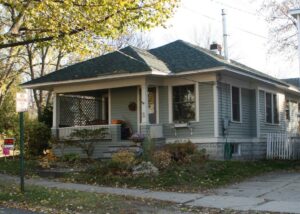 Kit Houses
Kit Houses
National Register Block 1

The National Register is the nation’s official list of cultural resources with historical, architectural, cultural, or archaeological significance. It is perhaps the most well-known protective designation with approximately 1.8 million listings nationwide. Some historic properties are significant enough to be listed individually, while others are listed collectively as part of a historic district; they derive their significance as part of a collection of historic resources. Anyone can nominate a property to the National Register.
There is often confusion about the impact of National Register designation on the ability to make future changes to a property. Will you be penalized if you decide to replace your cedar roof shingles with asphalt ones? Or paint your house the wrong shade of white? Unless there is another regulation in place, the answer is “no.” The National Register listing is voluntary and honorary. It does not regulate changes made by private owners, though it can offer limited protection from public projects with government funding and licensing. National Register listing also opens potential funding opportunities in some cases, such as federal historic preservation tax credits.
If the National Register is not a local regulatory tool, what does it do? The National Register is foremost an important planning tool, part of a nationwide effort to coordinate the identification and evaluation of historic resources to aid in their protection. It helps communities manage development and change in ways that reduce adverse impacts to historic resources. For instance, it may factor into decisions to demolish historic structures to build a highway on-ramp or other federally funded project.
Many states also maintain official inventories or registers of historic and cultural resources of local or state significance as a planning tool. A property can be documented as either a single resource or a collection of resources that constitute a historic district, such as a village, or a large complex, such as a farmstead. All properties that are listed in the State Register are documented on a survey form, which identifies properties for protection against potentially harmful government projects and sometimes makes them eligible for special funding and other incentives.